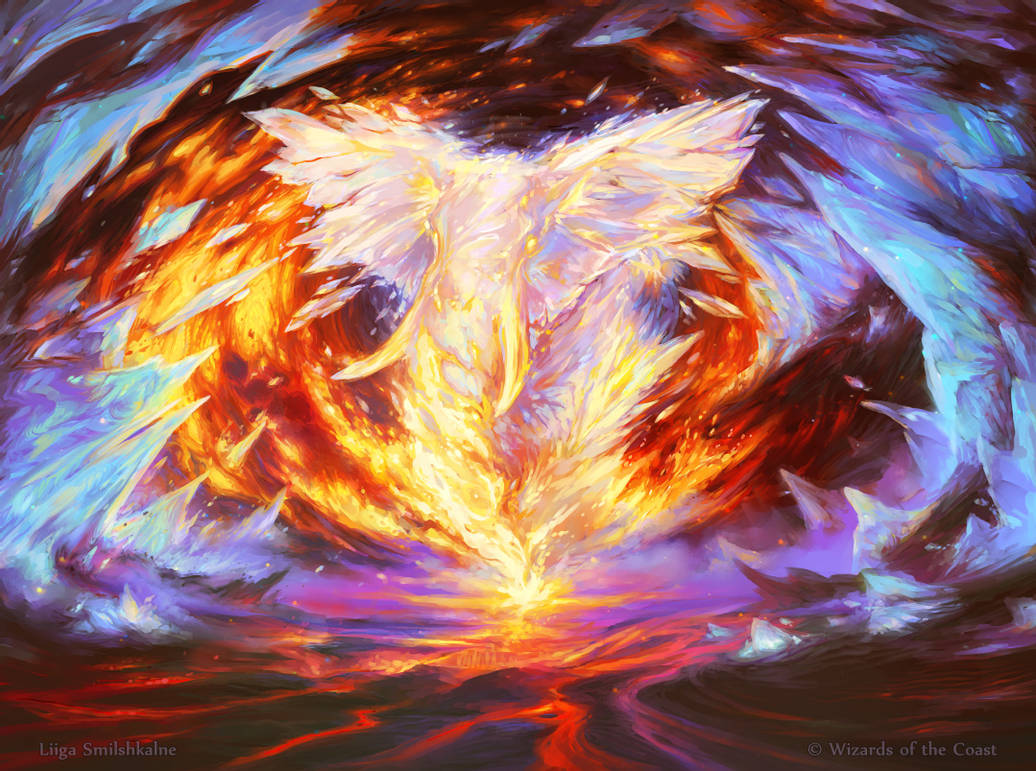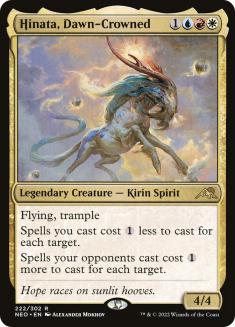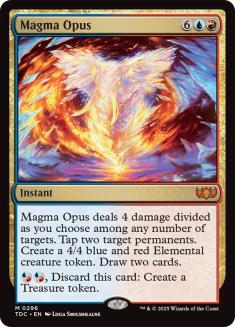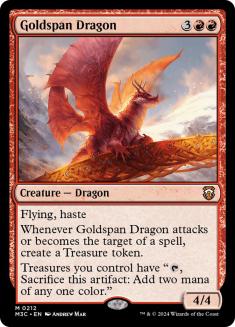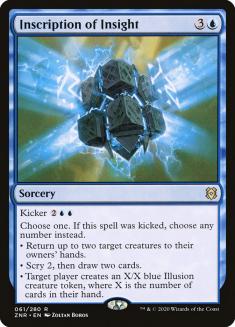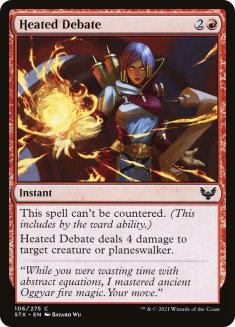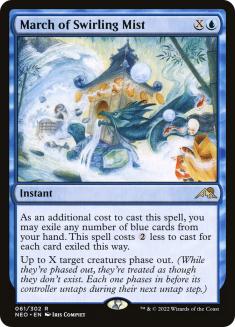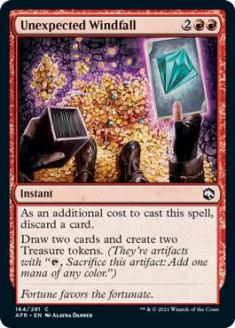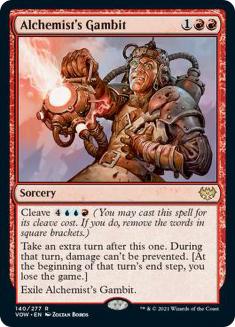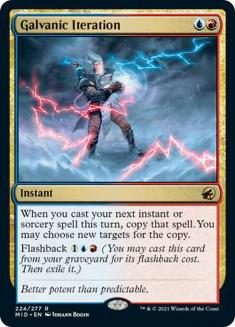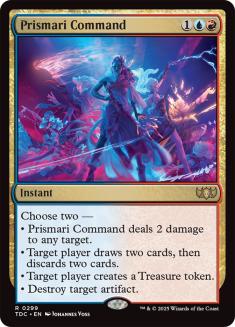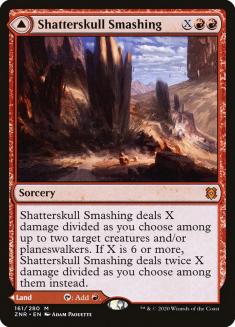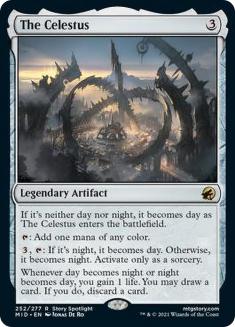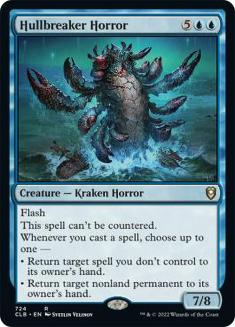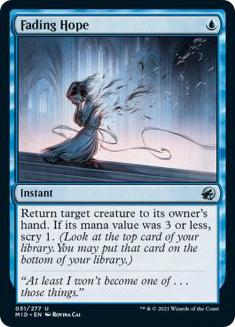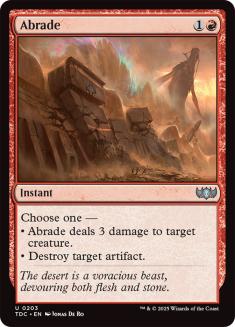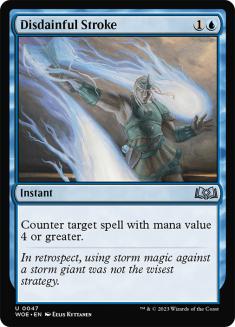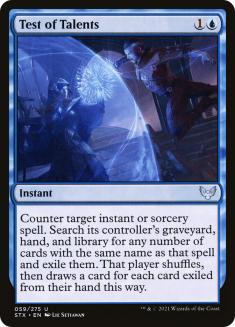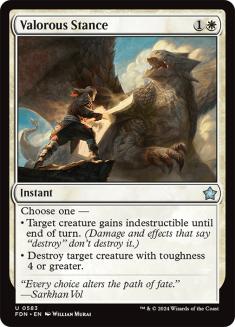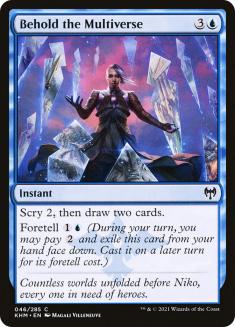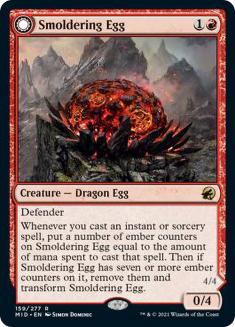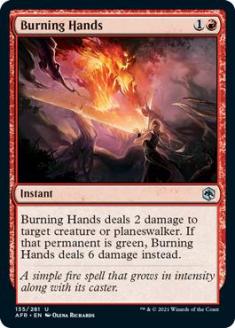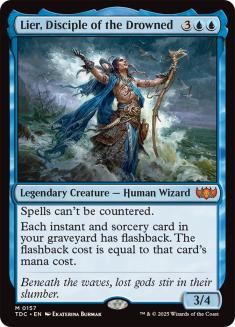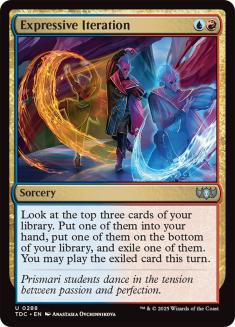Earlier this week, I wrote about some of the more interesting interactions that have sprung up since the release of Kamigawa: Neon Dynasty.
Many of them were pretty niche, but one in particular may already be the best thing we can be doing in both Standard and Alchemy. Of course, I’m talking about Hinata, Dawn-Crowned and Magma Opus. Today we’ll break down this Jeskai powerhouse, look at some of the more interesting options to add into decks featuring these cards, and ultimately try to come to the best list for both formats.
Let’s get into it!
The combo is simple; once Hinata, Dawn-Crowned is on the battlefield, it will help reduce the cost of Magma Opus by a colorless mana for each target Magma Opus has. For example, if you deal one damage to four unique targets and tap two other permanents that aren’t being targeted for damage, then you’ll end up only paying a single blue and single red mana for the Magma Opus. If you have more available mana when it comes time to cast Magma Opus, you can deal more damage to individual creatures or add a Galvanic Iteration into the mix to “combo off” even more.
So that’s the general combo, but what’s great about both of these cards is we can build a deck around them to synergize with other elements of a deck. For example, Magma Opus can be discarded to make a Treasure. And who loves Treasures?
Goldspan Dragon loves Treasures!
The same goes for Hinata, as it’s going to reduce the cost of Negate, Abrade, and even Shatterskull Smashing. But what about the more fringe synergies? Let’s take a quick look at some really fringe cards people have been trying in Jeskai shells to further abuse Hinata.
Inscription of Insight is a pretty interesting spell in that it can still act as the deck’s card advantage spell, but also can get some of that cost reduction Hinata’s giving out. After cost reductions, Inscription of Insight can return two creatures to their owner’s hand for two mana. It can make an X/X creature for three mana since that targets as well. When kicked, it’ll only cost 3UU to do it all, since there will be three targets in the mix.
Ultimately, I think this is interesting, but not good enough. Sorcery-speed card advantage is not going to play out well in most matchups, especially in matchups where the other two modes of the cards aren’t very useful. I’m under the assumption that Jeskai decks featuring Hinata will become very popular, so making sure your deck is geared towards them is of the utmost importance.
I played two copies of Heated Debate at last year’s SCG Invitational due to how good it was in the Izzet Epiphany mirror. Whether it was a Smoldering Egg or Goldspan Dragon, being able to guarantee their demise was important. Now that Alrund’s Epiphany is banned, these “blue mirrors” are all about creatures that have four toughness that also work well with Negate. Being able to kill a Hinata or Goldspan Dragon is going to be very important.
Another interesting card that synergizes exceptionally well with Hinata is March of Swirling Mist. Thanks to Hinata’s cost reduction ability, March of Swirling Mist will always cost exactly one blue mana even if you’re targeting fifteen creatures. This makes it a great way to protect your creatures from removal or mass removal effects, can act as a Fog with extra benefits, or clear blockers for an alpha strike.
This is another card that I think is cool, but probably not what we’re going to want in our deck. We’re looking for a more concrete plan that ultimately goes over the top of an opponent. We don’t need to get cute; we need to not die. This means playing the generic good cards, and going from there. You know, Abrade, Fading Hope, Jwari Disruption — those sorts of cards.
Let’s get to the good part and talk about decklists. There are a few unique paths we can take with Jeskai Hinata decks, because there are just so many ridiculously good Izzet cards floating around these days. We’ll start with a more combo approach.
Creatures (4)
Lands (22)
Spells (34)

Chris Botelho is a member of the Magic Pro League and has been streaming Jeskai Midrange daily (watch him on Twitch). At one point this week, Chris bolstered a 41-4 record with the strategy, though I believe the win percentage has gone down since then. I mean, it has to eventually come down from that win rate, right? Anyway, Chris’s list is very combo-control oriented, playing only Hinata, Magma Opus, and a single Hall of Storm Giants as its win conditions. It’s also got that Izzet Epiphany feel with two copies of Alchemist’s Gambit.
I really love Chris’s take of the deck in a world full of mirrors, as Galvanic Iteration plus Unexpected Windfall is a great combo in Izzet-based mirrors, but the lack of Goldspan Dragon is a weak point in those matchups as well. Let’s take a look at a more midrange version of the deck.
Creatures (8)
Lands (22)
Spells (30)

Another member of the Magic Pro League, Seth Manfield has also been playing a hefty amount of Jeskai Midrange decks. The only difference is his variations have played Goldspan Dragon and have not leaned on Alchemist’s Gambit. This makes the deck function much less like a combo-control strategy like Chris’s or past versions of Izzet Epiphany, and more like Izzet Midrange (Dragons) we saw from last season.
Obviously, there’s a ton of overlap in both versions, so what we’re really looking to figure out is which version has more pros than cons. One of the biggest pain points I’ve found with versions playing Goldspan Dragon is the clunkiness that comes with playing eight threats that cost four and five mana, respectively. This will sometimes clog up hands with too many threats, forcing you to just cast them and see what happens. This can be detrimental against aggressive decks as well as control decks.
That said, not having access to more threats like Goldspan Dragon can really put a damper on the ability of a deck like Chris’s to turn the corner. Decks like this can’t control the game forever, so not drawing Hinata or Magma Opus in the top fifteen cards or so can leave you flooding out on cards meant for the early-game. These Izzet decks get access to Spikefield Hazard and Jwari Disruption, which are amazing in the early turns and also allows you to play 28-30 mana sources, but have very little effect in the later turns. The flood is real, and having more threats helps mitigate that.
These spells also help mitigate both flood and creature clutter. They may not be the most effective, but they do a job needed in strategies like this. It’s just important to not overload on them, as you never want to draw too many of them along with your four copies of Expressive Iteration.
So this brings us to my build of the deck that I’ve been playing.
Creatures (7)
Lands (22)
Spells (31)

My list is very similar to Seth’s, as I’m a firm believer in Goldspan Dragon, but I haven’t really liked four of them. I’ve also found that Goldspan Dragon is great in the blue-based matchups like the mirror, but not what I want in my deck on the draw against aggressive decks. That’s why I’ve got Smoldering Egg and Lier, Disciple of the Drowned in the sideboard. These creatures give me the fluidity to change my threat package in differing matchups and when I’m on the play or the draw.
A card I swore would be in my final list was Hullbreaker Horror. Now, it wasn’t that great last season in the Izzet Epiphany mirrors, but that was mostly due to Divide by Zero. Since that’s gone, I just assumed this would be a powerhouse, but the splash for Valorous Stance has really changed my opinion. It’s just not easy to get to a place in a game where you can cast Hullbreaker Horror with enough mana to protect it. My sample might be too small, because in theory it should now be a great sideboard option, but in my games it just wasn’t cutting it.
Sideboarding
VS Jeskai Midrange
Out:
In:
VS Azorius Aggro
Out:
In:
VS Mono-Green Aggro❄
Out:
In:
VS Orzhov Midrange
Out:
In:
These Orzhov matchups really come down to their composition. Right now, the strategy isn’t homogenized, so you may see very aggressive versions and others that are more controlling. Don’t just use this template for each match, because you may find value in cards like Disdainful Stroke or Goldspan Dragon.
VS Rakdos Sacrifice
Out:
In:
That’s all I’ve got for this week, and in fact this will be my last strategy-driven article for Star City Games. Next week will be my last article on the site, and I’m still pondering on how I want to use my last time on this platform.
Thank you, Star City Games, for everything, and we’ll see you next week!

